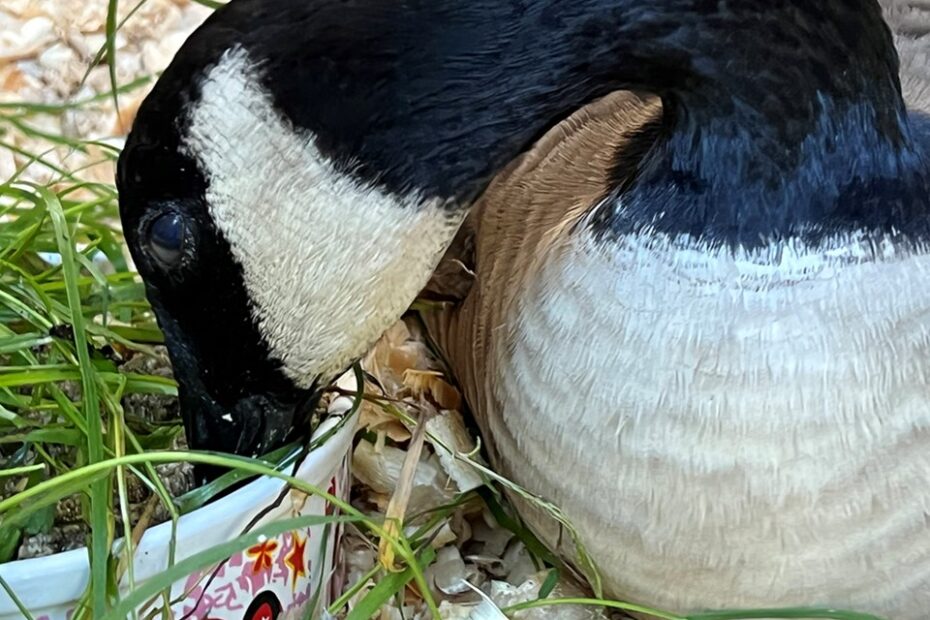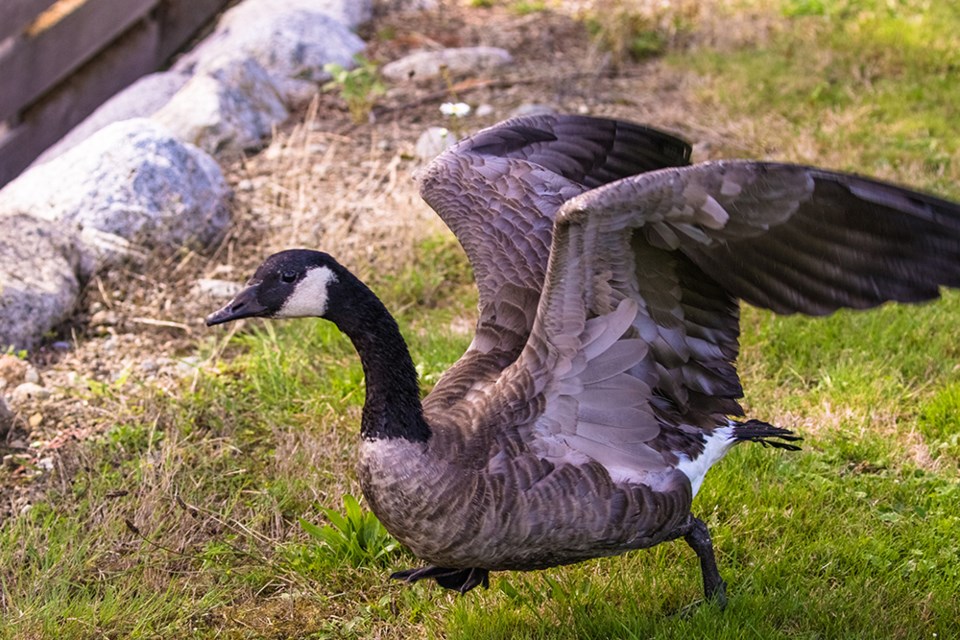Smaller than either a Canada goose or a snow goose, this cackling goose was found at Gibsons Beach. Its face was pushed down into the sand and its head was twitching. An eagle was standing nearby, waiting and watching, anticipating its next meal.
Fortunately for the eagle, it had not yet approached the cackling goose, which was a victim of avian flu and at death’s door. So contagious and deadly is this disease, the eagle would also die if it had made contact with the goose.
Back at PROWLS, Merrilee Prior made the goose comfortable in a kennel, anticipating its death, which happened within hours.
Bird/avian flu is caused by a virus. After a wild bird infects a farm-raised bird, the virus can easily and quickly spread among hundreds or thousands of birds. Sick birds must then be killed to stop the virus from spreading. So far, the birds mostly at risk appear to be water birds, such as ducks and herons, the raptors that eat them, like eagles, and domestic poultry.
During migration from summer breeding grounds in the Arctic and winter, cackling geese gather in flocks in open, mostly treeless habitats. They rest, bathe and roost on lakes and reservoirs. Their calls are higher in pitch than those of Canada geese and often sound like laughter. We often see them in mixed flocks with both Canada and snow geese.




